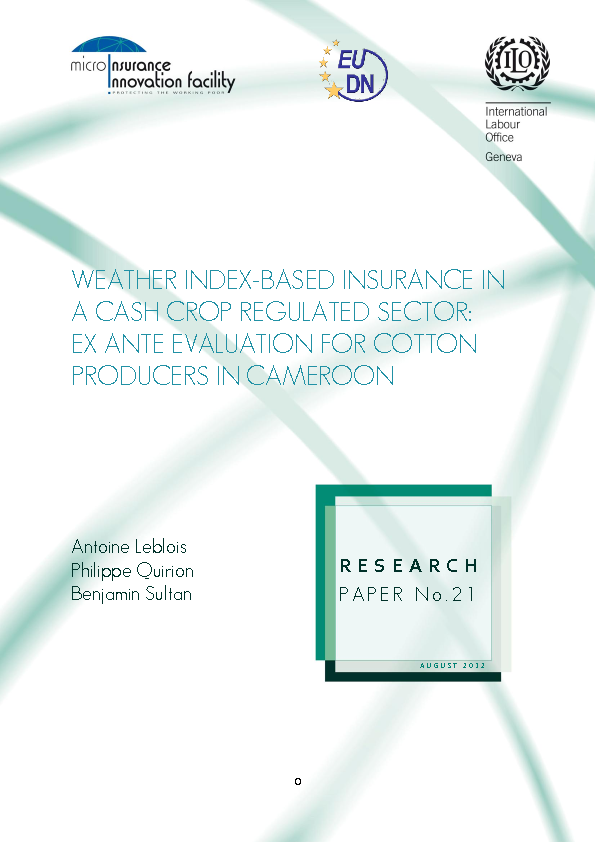Weather Index-Based Insurance in a Cash Crop Regulated Sector: Ex Ante Evaluation for Cottom Producers in Cameroon

In the Sudano-sahelian region, which includes Northern Cameroon, the inter-annual variability of the rainy season is high and irrigation is scarce. As a consequence, bad rainy seasons have a massive impact on crop yield and regularly entail food crises. Traditional insurances based on crop damage assessment are not available because of asymmetric information and high transaction costs compared to the value of production. Moreover the important spatial variability of the weather creates a room for pooling the impact of bad weather using index-based insurance products. We assess the risk mitigation capacity of weather index-based insurance for cotton growers. We compare the capacity of various weather indices coming from different sources (daily rainfall, temperatures and satellite imagery) to increase the expected utility of a representative risk-averse farmer.
We first find that weather index-based insurance is associated with huge basis risk, no matter what the index or the expected utility function is chosen, and thus has limited potential for income smoothing (in accordance with previous results in Niger: Leblois et al., 2011). We show that using observed cotton sowing dates significantly increases the performance of indices based on daily rainfall data. We give a tractable definition of basis risk and use it to show that calibrating parameters in sub-regions allows to reduce dramatically basis risk and to avoid non negligible balancing out between distinct geographical zones, even within a relatively bounded area. For instance the use of remote sensing indicators, that have the strong advantage of being cheap, easy to use and available freely, only improve the performance of insurance when calibrated to the appropriate spatail level. This leads to think that weather index-based insurance are worth only if calibrated on an area subject to a homogeneous climate, but potentially distinct weather during the same cropping season. In our case, the size of the area corresponds to about 1 CIRED (Centre International de Recherche sur l’Environnement et le Developpement), leblois@centre-cired.fr 2 CIRED, LMD (Laboratoire de M´et´eorologie Dynamique) 3 LOCEAN (Laboratoire d’Oc´eanographie et du Climat Lxperimentation et Approches Num´eriques). one decimal degree. We finally provide raw evidence showing that idiosyncratic (intra-village) yield and price shocks are also quite significant, comparing the amplitude of income variations due to those shocks relatively to weather shocks and conclude that they should be considered with greater attention. Those results have to be seen under the light of the recent findings showing very low take-up rates of weather index insurances when actually offered to farmers.
